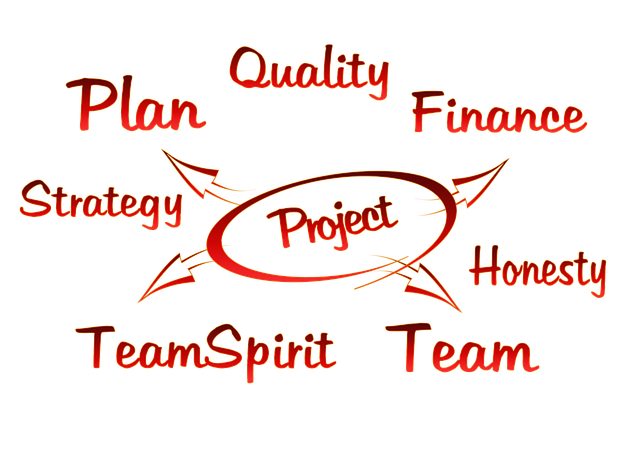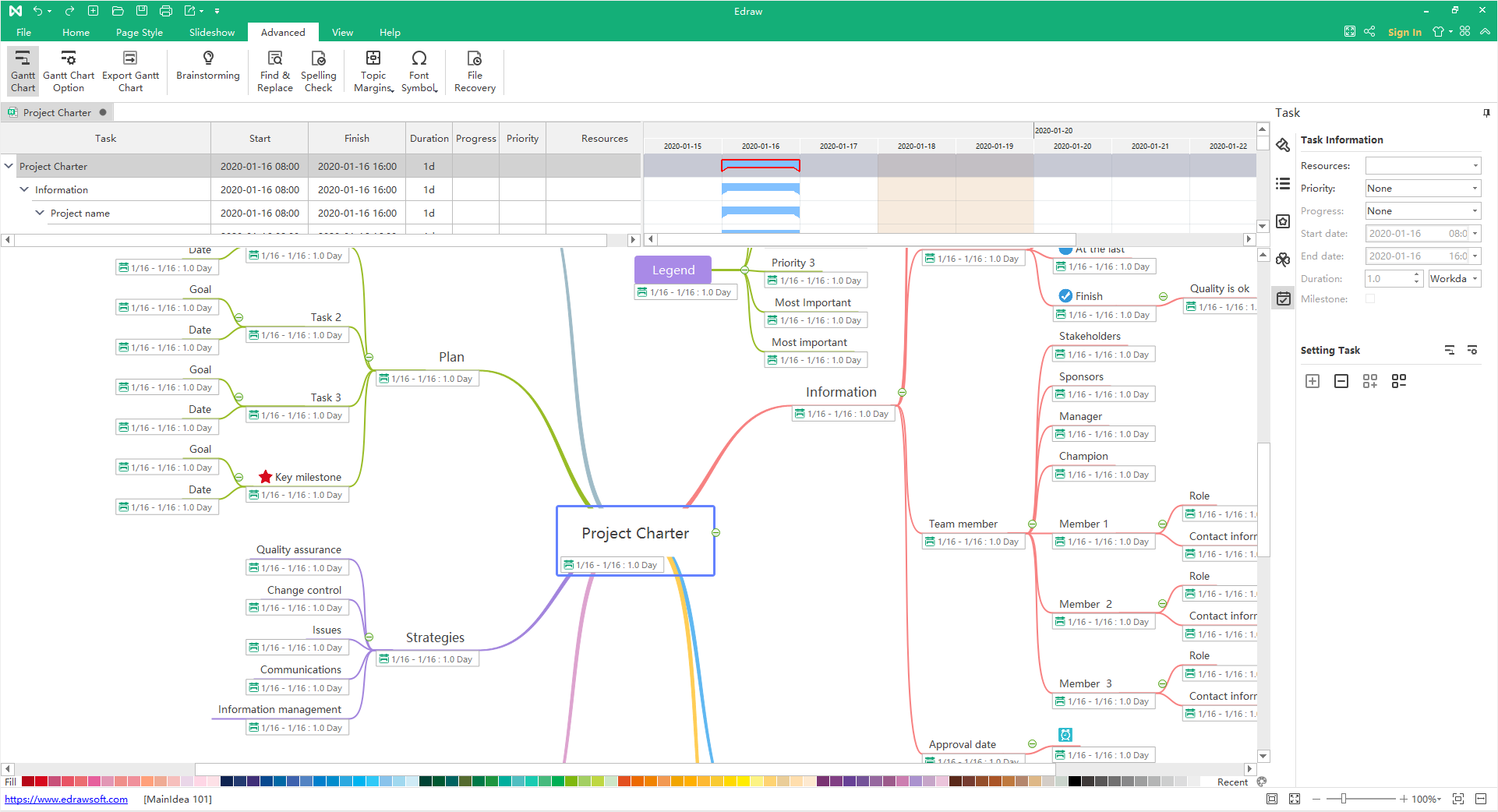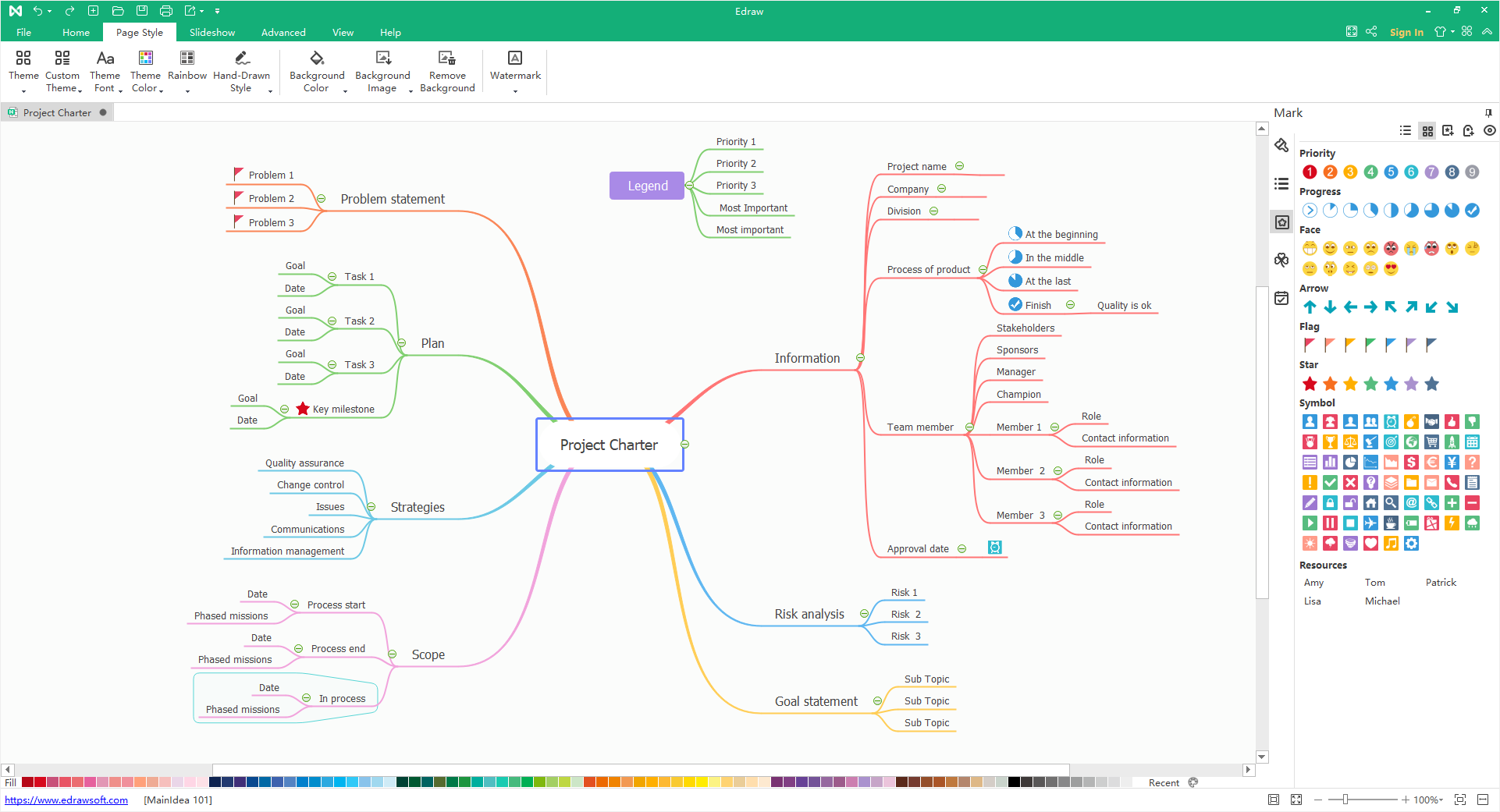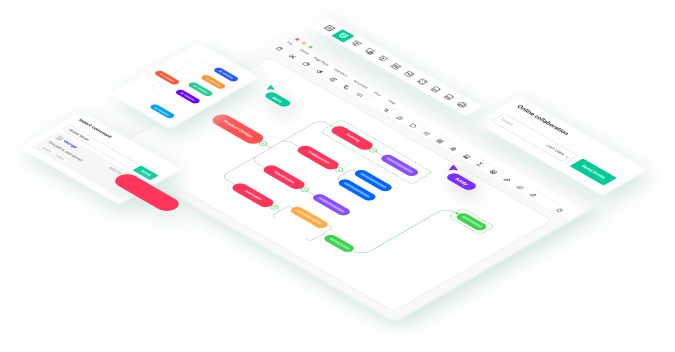In this article
What is a Project Management Plan?
Managing a project entails juggling a lot of processes and overseeing many tasks. It is critical to have a plan in place when you want to execute a project successfully and expertly.
A project management plan can be regarded as a detailed guide that takes you from ground zero on a project to the finish line. A project management plan is a detailed document that outlines how a project is to be handled from the outset, and it includes a stage-by-stage guide on how to monitor, execute, and successfully finalize a project.
The project management plan describes the stages involved in a project and outlines the parties responsible for handling the tasks in each phase of the project. The project management plan can be likened to a consultation guide. It is used to measure the progress on each stage of a project, to see how well a project is getting along and can be useful for deciding resource allocation.
A project management plan is an indispensable tool for the success of any project. Therefore, it is no surprise that many professionals utilize this tool to manage their projects, be it project managers, project members, or even top executives.

For a project manager, the usefulness of a project management plan stands undebated. The project management plan serves as a compass, guiding a project manager on the best route to steer a project. The project management plan informs the decisions a project manager takes, helping him to achieve the objectives of a project. The project management plan helps a project manager understand the requirements of a project, the tasks involved, and the time available to complete a project.
For project members, a plan is vital for informing them how they approach their tasks. The project management plan lays out the schedule for each stage of a project, enabling team members to get on board and deploy their skills to push a project forward.
Projects require resources. A project management plan is crucial for a meaningful distribution of resources for executing a project. Top executives utilize project management plans to decide how many resources are required and what stage of the project needs the most resources. A project management plan enables senior executives to make informed decisions on budget, cost, and related issues on a project.
What Should be Included in a Project Management Plan
To draft a clear and precise project plan, it is important to include some key elements that will make the project management process a smooth one. We have highlighted some of these elements below:
A clearly defined project goal
The first thing to keep in mind when creating a project plan is the goal or objective of your project. The goal will be the reason for embarking on the project. A clearly defined goal will guide the decisions taken in the course of a project.
Project scope outline
How far do you intend your project to go? What are the limits of your projects? These questions help you come up with a structure and a boundary for your project. The scope entails all the areas your project will cover, and this is a key element because it prevents your project from veering off course.
Clear output and deliverables
After you have clearly defined your project's objective, you should consider what your project's final product should look like. What do you intend to produce or achieve at the end of the project cycle? The answer to this question will represent the output/deliverables of your project. Your output and deliverables are what you have to show at the end of a project
Budget
Executing a project requires completing a number of tasks in different stages. It takes resources and funds to execute the different stages of a project. A budget plan is an essential part of a project plan because it describes how much funding will go into a project and how much funding is required for each stage of the project.
Schedule
Projects are time-bound. The schedule describes the start and finish times of projects and how long each stage is expected to last. The schedule is important because it keeps project members informed about how long they need to spend on a task and helps to propel and keep everyone on track.
How to Make a Good Project Plan
Having shared with you some of the key elements that are required in a project plan, how do you now create a project plan unique to yourself or your organization? Below, we've outlined, in a step-by-step approach, the procedure for developing a good project management plan. Completing these steps will help you finish up a project plan even if you're a beginner with no prior experience with the project planning process.
The first step in creating a project plan is to figure out what you intend to achieve at the end of your project. Start with the end in mind.
What issues do you want your project to address? What is the purpose of your project? What needs does your project meet?
To help answer these questions, identify the people who will be impacted by your project and find out how your project can be beneficial to them. Such people are described as “Stakeholders.” The benefits you find can be translated as the goals you intend to achieve with your project.
How far do you want your project to go? What are the boundaries or limits of your project? Areas you don't want to stretch your project to? The scope of your project can be likened to the perimeters of a building—how extensive do you intend your project to be? Defining the perimeter/scope will inform the resources and human capital that'll go into your project.
Once you know how extensive your project will be and how much work will go into the project, it is time to lay out the budget for getting the job done clearly. Break down the scope into different stages and tasks, and figure out how many resources are required to get each stage completed.
Whatever you intend to produce or show forth at the end of your project is termed a “deliverable.” Deliverables are the final products or services that you intend to deliver when the project work is complete. State down how long you think it would take to deliver your project's deliverables and the tasks that must be undertaken to ensure that your project produces those deliverables.
The schedule is the project's estimated timeline, and it should specify the tasks and stages involved in the project and how much time each task/stage is expected to take. Illustrate the timeline using a Gantt chart. A Gantt chart keeps things organized and helps you stay on course, showing you what stage you're in and what's still left to be done on the project.
The following information in your plan is necessary as it provides more detail and structure to your project management process.
Workforce details: Outline the categories of people expected to work on the project—from professionals to technicians to consultants. Include the time frame each personnel category is expected to commence work on the project, and the number of hands required to get work done.
Communications details: As the project progresses, it is essential to create detailed reports describing how the project is getting along and the challenges encountered. These reports will form your communications plan. You should decide the time frame for creating such reports, whether weekly, fortnightly or monthly. Decide as well, the key stakeholders who should stay in the loop and receive these reports.
Risk management details: It is normal to face some challenges and risks in the course of any project. Risks are expected and plans must be put in place to manage them as they crop up. Figure out and outline the risks you expect to encounter in the course of your project, and detail out for each risk a strategy for navigating them.
How to Make a Good Project Plan
Now that we've run through the steps for creating a detailed project management plan, it can seem a bit complicated if you've never done one yourself.
The truth is, planning your project involves a lot of detail and critical thinking, and if you're doing the planning traditionally on paper, it can seem like really hard work.
How do you keep things organized and have a better visual image of the stages involved in the project? To do this, you should make use of software designed with project plans in mind.
EdrawMind is a great project planning tool to start with, and if you're a beginner, you have nothing to worry about as MindMaster is intuitive, easy to navigate. It produces project plans that are professionally striking, giving your project plans a bold, expert feel.
To get started with MindMaster, open your computer, create an account for free, and start outlining your project plan in a Gantt chart on the MindMaster platform. It's that straightforward and easy.

MindMaster provides you with an abundance of visually appealing templates that you can easily customize to reflect your project's uniqueness. And if you're feeling pretty adventurous, you can take advantage of the many professional icons and images to create your project plan from scratch. You can share your completed project plan with the people that matter to your project and even export your plan in several formats for easy accessibility.

Need to access your project plan on multiple devices? No worries! MindMaster is cross-platform, and you can access your project plans on both PC, Web, and mobile devices.
It's been long read, and we've explored how planning is crucial to the successful execution of any project. Doing an excellent job on a project requires envisioning the end and outlining how to get to that end. A project management plan is how you map your way to a successful project. Follow the steps we have outlined, including the key elements of the project planning process and create your unique project plan on MindMaster without complications.






